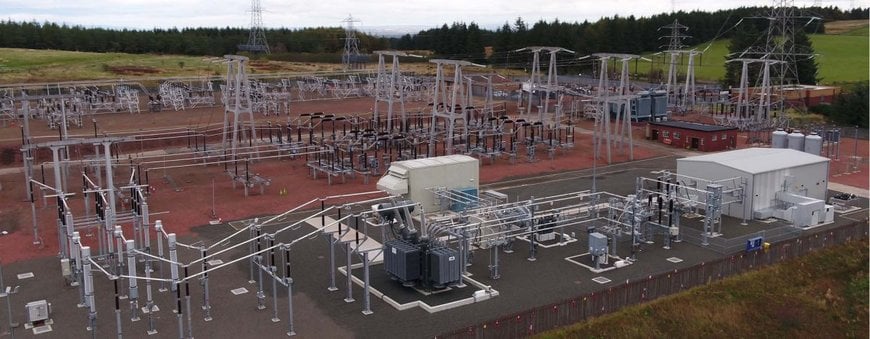Hitachi ABB Power Grids' innovative technology set to contribute to the UK's carbon-neutral future
Hitachi ABB Power Grids has launched a year-long trial of the world's first hybrid solution, which combines a STATCOM (static compensator) with a synchronous condenser, working with SP Energy Networks, the University of Strathclyde and the Technical University of Denmark.

- Phoenix project trials of the world's first hybrid solution begin in Scotland.
- Unique technology to revolutionize the UK's electricity network by smoothing the transition from traditional generation to renewables
This innovative new technology is set to contribute significantly to the UK's carbon-neutral future by enabling a smooth transition from traditional energy generation to renewable power and its integration into the electricity network.
The Ofgem Network Innovation Competition (NIC), set up by the UK's electricity regulator, Ofgem, funded the Phoenix project which started in 2018. The outcome of the project is expected to contribute a cumulative savings of over 62,000 tons of carbon emissions, which is equivalent to the electricity use of over 6,000 homes.
As part of the trial, Hitachi ABB Power Grids has installed the world's first hybrid solution, a strategic 275 kilovolt (kV) substation on SP Energy Networks' transmission network near Glasgow in Scotland. The project partners will now evaluate the installation's performance over the year-long trial.
"While power stations produce a steady and constant flow of energy, renewable energy generators like wind and solar can fluctuate as they respond to different weather conditions," said Niklas Persson, Managing Director of Hitachi ABB Power Grids' Grid Integration business unit. "This pioneering hybrid solution combines existing technology with an innovative control system that will enable a reliable and stable energy supply, while accelerating the UK towards a carbon-neutral future."
Colin Taylor, Director of Processes and Technology at SP Energy Networks said, "I'm very proud that we have been able to drive forward with the Phoenix project this year, despite the recent pandemic and it's challenges." He continued,"This world first innovative project has just reached a key milestone following the commencement of its live trial. Technology like this allows us to accommodate even more renewable generation on our electricity system while maintaining levels of system stability and resilience."
About the solution
The first-of-its-kind hybrid solution combines traditional technology with power electronics and a hybrid control. The outcome is a system that is capable of delivering a combination of fast reaction, spinning capacity and short circuit control. The solution will inject or absorb energy into the network to maintain the voltage level within the required limits. In effect, it will provide a spinning reserve over a few seconds until other resources, such as a battery energy storage system (BESS) or a reserve generator, can be brought online.
At Neilston substation near Glasgow a static synchronous compensator (STATCOM) operates in parallel with a synchronous condenser, connected to the bus via a three-winding power transformer. The STATCOM utilizes Modular Multilevel Converter (MMC) valve technology, while the synchronous condenser is a 4-pole motor with brushless excitation system.
www.hitachi.com

